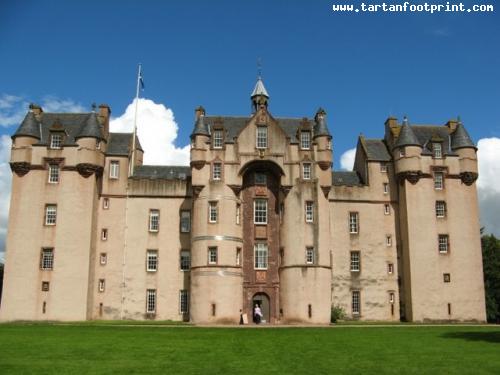You seem to be using an older version of Internet Explorer. This site requires Internet Explorer 8 or higher. Update your browser here today to fully enjoy all the marvels of this site.
April 22, 2018 by Alexander Meldrum
Fyvie Castle is a castle in the village of Fyvie, near Turriff in Aberdeenshire, Scotland Once owned by the Meldrum Clan.
History
The earliest parts of Fyvie Castle date from the 13th century – so...Fyvie Castle is a castle in the village of Fyvie, near Turriff in Aberdeenshire, Scotland Once owned by the Meldrum Clan.
History
The earliest parts of Fyvie Castle date from the 13th century – some sources claim it was built in 1211 by William the Lion. Fyvie was the site of an open-air court held by Robert the Bruce, And Charles I lived there as a child. Following the Battle of Otterburn in 1390, it ceased to be a royal stronghold and instead fell into the possession of five successive families,
Preston, MELDRUM, Seton, Gordon and Leith – each of whom added a new tower to the castle. The oldest of these, the Preston tower (located on the far right as one faces the main facade of Fyvie), dates to between 1390 and 1433. The impressive Seton tower forms the entrance, and was erected in 1599 by Alexander Seton; Seton also commissioned the great processional staircase several years later.
The Gordon tower followed in 1778, and the Leith in 1890.
Inside, the castle stronghold features a great wheel stair, a display of original arms and armour, and a collection of portraits. Manus O'Cahan and Montrose fought a successful minor battle against the Covenant Army at Fyvie Castle on October 28, 1644. The battlefield is currently under research to be inventoried and protected by Historic Scotland under the Scottish Historical Environment Policy of 2009.
Following Victorian trends, the grounds and adjoining Loch Fyvie were landscaped in the 19th century. The Scottish industrialist Alexander Leith (later Baron Leith of Fyvie) bought the castle in 1885. It was sold to the National Trust for Scotland in 1984 by his descendants.
To the East, there is a walled garden which is currently a garden of Scottish Cultivated Fruits. There is evidence for two other walled gardens closer to the castle itself to its West and South.The one to the west appears on an estate plan of 1768.
Hauntings
The castle (like many places in Scotland) is said to be haunted. A story is told that in 1920 during renovation work the skeleton of a woman was discovered behind a bedroom wall.
On the day the remains were laid to rest in Fyvie cemetery, the castle residents started to be plagued by strange noises and unexplained happenings. Fearing he had offended the dead woman, the Laird of the castle had the skeleton exhumed and replaced behind the bedroom wall, at which point the haunting ceased.
It is said that there is a secret room in the south-west corner of the castle that must remain sealed, lest anyone entering meet with disaster. It is unclear if this is the same room in which the skeleton was found. There is also an indelible blood stain, two ghosts and two curses associated with this place.
One of the curses has been attributed to the prophetic laird, Thomas the Rhymer. The curse is said to have been part of the mysterious three weeping stones.
Only one weeping stone is known to exist and is kept at the castle. The other two have never been found.
In the Media
Fyvie Castle has featured in a number of British television programmes, such as Living TV's Most Haunted season 6, And stv's Castles of Scotland.
The castle also played host to the setting of a children's game show on CBBC called Spook Squad in 2004. 2009 saw the publication of the children's fantasy novel,
The Time-Tailor and the Fyvie Castle Witch Trials, written by Deborah Leslie. The castle was also featured in BBC documentary, Castle Ghosts of Scotland narrated by Robert Hardy.
In recent years, the castle grounds have hosted a Fyvie Live music festival in the summer, which was headlined in 2011 by Beverley Knight and in 2012 by Sophie Ellis-Bextor,
Then following a gap of several years, by The Shires in 2017. Following the revival, it was announced that the event would take place again in 2018, with Ward Thomas as the headline act.
Today, the castle is open to tourists during the summer months.
In this photo:


